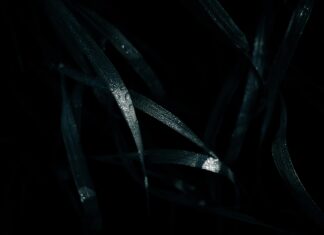Introduction to Wild Privet
Wild Privet, scientifically known as Ligustrum vulgare, is a deciduous shrub native to Europe, North Africa, and Western Asia. Belonging to the Oleaceae family, it’s renowned for its dense foliage, fragrant white flowers, and its ability to form hedgerows. In this exploration, we delve into the multifaceted aspects of Wild Privet, encompassing its botanical attributes, ecological roles, cultural significance, and practical applications.
Botanical Description
Wild Privet typically attains a height of 5 meters, though under favorable conditions, it can reach up to 7 meters. Characterized by opposite, lance-shaped leaves with a dark green, glossy appearance, these leaves typically measure between 2 to 6 centimeters in length. During summer, it bears small, creamy white flowers arranged in terminal panicles, adding a delightful fragrance to its aesthetic appeal.
Habitat and Distribution
Thriving in diverse habitats such as woodlands, scrublands, and hedgerows, Wild Privet showcases adaptability across various environments. Its native range spans Europe, encompassing widespread distribution. Beyond its native territories, it has been introduced to regions globally for its ornamental value, often naturalizing in these new habitats.
Cultural Significance
Throughout history, Wild Privet has held cultural significance across different societies. In ancient Rome, it symbolized protection and was frequently utilized for boundary delineation. Traditional Chinese medicine has also incorporated various parts of the plant for medicinal purposes, attributing properties for treating ailments such as fever and inflammation.
Ecological Impact
Despite its ornamental allure, Wild Privet can exert significant ecological impacts when introduced to non-native habitats. In some instances, it exhibits invasive tendencies, outcompeting indigenous vegetation and altering ecosystem dynamics. Its dense growth pattern shades out native flora, potentially diminishing biodiversity in ecosystems with limited natural disturbances.
Propagation and Cultivation
Cultivating Wild Privet is relatively straightforward, contributing to its popularity in landscaping and hedgerow formation. Propagation methods include seeds, cuttings, or root divisions. Optimal growth conditions entail well-drained soil and exposure to full to partial sunlight. Regular pruning aids in shaping and promoting bushy growth.
Wildlife Value
Despite its invasive potential, Wild Privet offers habitat and sustenance to various wildlife species. Birds are particularly drawn to the shrub for nesting sites and feed on its small fruits during late summer and fall. Furthermore, its dense foliage provides shelter and cover for insects and small mammals, contributing to local biodiversity.
Chemical Composition
The chemical composition of Wild Privet includes a diverse array of compounds such as iridoids, phenylethanoids, and flavonoids. These compounds not only contribute to its fragrance but also possess potential pharmacological properties. Studies have explored extracts of Wild Privet for antioxidant and anti-inflammatory activities, highlighting its medicinal potential.
Cultural Uses
Beyond its historical role in boundary formation, Wild Privet has been integrated into traditional herbalism for its purported medicinal benefits. Infusions or extracts derived from its leaves and flowers have been utilized to address various ailments including coughs, colds, and indigestion. However, caution is warranted as certain parts of the plant can be toxic if ingested.
Conservation and Management
Given its invasive tendencies, managing Wild Privet populations is crucial in preserving native ecosystems. Control measures encompass manual removal, chemical herbicides, or biological controls like targeted grazing by livestock. Conservation efforts focus on safeguarding native habitats and curbing further spread to mitigate ecological disruptions.
Cultural and Historical References
Wild Privet’s presence extends beyond the botanical realm, featuring prominently in cultural and literary narratives throughout history. From references in Shakespearean literature to symbolizing resilience in the face of environmental changes, its significance transcends its physical attributes, embodying themes of protection, adaptation, and human-nature interactions.
In essence, Wild Privet epitomizes a botanical entity intertwined with myriad ecological, cultural, and practical dimensions. Its journey from native landscapes to global introductions underscores the complexities of human-plant interactions, emphasizing the importance of holistic approaches in its management and conservation.
Wild Privet, scientifically known as Ligustrum vulgare, is a versatile deciduous shrub that holds a significant place in the botanical world. Its name, “Wild Privet,” evokes images of lush greenery and fragrant blooms that have graced landscapes for centuries. This resilient plant, native to Europe, North Africa, and Western Asia, has captivated gardeners, herbalists, and conservationists alike with its diverse array of attributes and ecological roles. From its botanical characteristics to its cultural significance, Wild Privet stands as a testament to the intricate relationship between humans and the natural world.
Wild Privet, with its botanical name Ligustrum vulgare, is a deciduous shrub belonging to the Oleaceae family. Its graceful appearance, adorned with dense foliage and clusters of delicate white flowers, adds a touch of elegance to any landscape. In addition to its ornamental value, Wild Privet plays essential ecological roles, providing habitat and sustenance for various wildlife species. Despite its invasive tendencies in certain regions, it remains a beloved plant for its aesthetic appeal and cultural significance.
The botanical description of Wild Privet paints a vivid picture of its distinctive features. Typically reaching heights of up to 5 meters, though occasionally towering to 7 meters under favorable conditions, Wild Privet commands attention with its upright growth habit and arching branches. Its lance-shaped leaves, arranged opposite each other along the stems, boast a dark green hue and glossy sheen, measuring between 2 to 6 centimeters in length. During the summer months, Wild Privet adorns itself with panicles of small, creamy white flowers that emit a sweet fragrance, attracting pollinators and enchanting onlookers with their delicate beauty.
In its native habitats of Europe, North Africa, and Western Asia, Wild Privet thrives in a variety of environments, from woodlands and scrublands to hedgerows and disturbed areas. Its adaptability allows it to establish robust populations across diverse landscapes, demonstrating resilience in the face of changing conditions. However, this adaptability can also pose challenges when Wild Privet is introduced to non-native regions, where it may exhibit invasive tendencies, outcompeting native vegetation and altering ecosystem dynamics.
Despite its potential for ecological disruption, Wild Privet holds a revered place in human culture and history. Throughout the ages, it has been celebrated for its multifaceted attributes and utilized for various purposes. In ancient Rome, Wild Privet symbolized protection and was commonly used to create boundaries around properties, marking the transition from the wild to the domesticated. Its association with boundaries and delineations speaks to its enduring presence in human landscapes, both literal and metaphorical.
In traditional Chinese medicine, different parts of the Wild Privet plant have been utilized for their purported medicinal properties. Infusions or extracts made from its leaves and flowers have been employed to treat a range of ailments, including fever, inflammation, and digestive issues. While the efficacy of these remedies may vary, they underscore the plant’s cultural significance and the intimate relationship between humans and the natural world.
The ecological impact of Wild Privet extends beyond its aesthetic appeal and cultural significance, shaping ecosystems and influencing biodiversity. In its native habitats, it plays a vital role in providing habitat and food for various wildlife species. Birds, in particular, are drawn to Wild Privet for nesting sites and feed on its small fruits, contributing to the dispersal of seeds and the perpetuation of its lifecycle. Additionally, its dense foliage offers shelter and cover for insects and small mammals, further enhancing local biodiversity.
In regions where Wild Privet has been introduced, its invasive tendencies can have far-reaching consequences for native ecosystems. Its rapid growth and prolific seed production enable it to outcompete indigenous vegetation, forming dense monocultures that displace native flora and reduce overall biodiversity. This disruption cascades through the ecosystem, impacting species composition, nutrient cycling, and ecological processes. Efforts to manage invasive Wild Privet populations often require a multifaceted approach, combining manual removal, chemical herbicides, and biological controls to mitigate its spread and minimize ecological harm.
Despite its ecological implications, Wild Privet continues to be valued for its ornamental qualities and practical applications in landscaping and gardening. Its ability to form dense, evergreen hedges makes it a popular choice for property boundaries, providing privacy, noise reduction, and aesthetic enhancement. With proper care and maintenance, Wild Privet can thrive in a variety of soil types and environmental conditions, making it a versatile addition to residential and commercial landscapes alike.
The chemical composition of Wild Privet encompasses a diverse array of compounds, including iridoids, phenylethanoids, and flavonoids. These compounds contribute to its fragrance and may possess pharmacological properties with potential medicinal benefits. Research into Wild Privet extracts has revealed antioxidant and anti-inflammatory activities, suggesting possible applications in herbal medicine and pharmaceuticals. However, further studies are needed to elucidate the full range of its therapeutic potential and ensure safe and effective use.
In conclusion, Wild Privet stands as a botanical marvel, blending aesthetic appeal with ecological significance and cultural resonance. From its graceful appearance and fragrant blooms to its role in supporting wildlife and shaping ecosystems, it embodies the intricate interplay between humans and the natural world. As we continue to navigate the complexities of conservation and land management, Wild Privet serves as a poignant reminder of the profound connections that bind us to the plants and landscapes that surround us.























